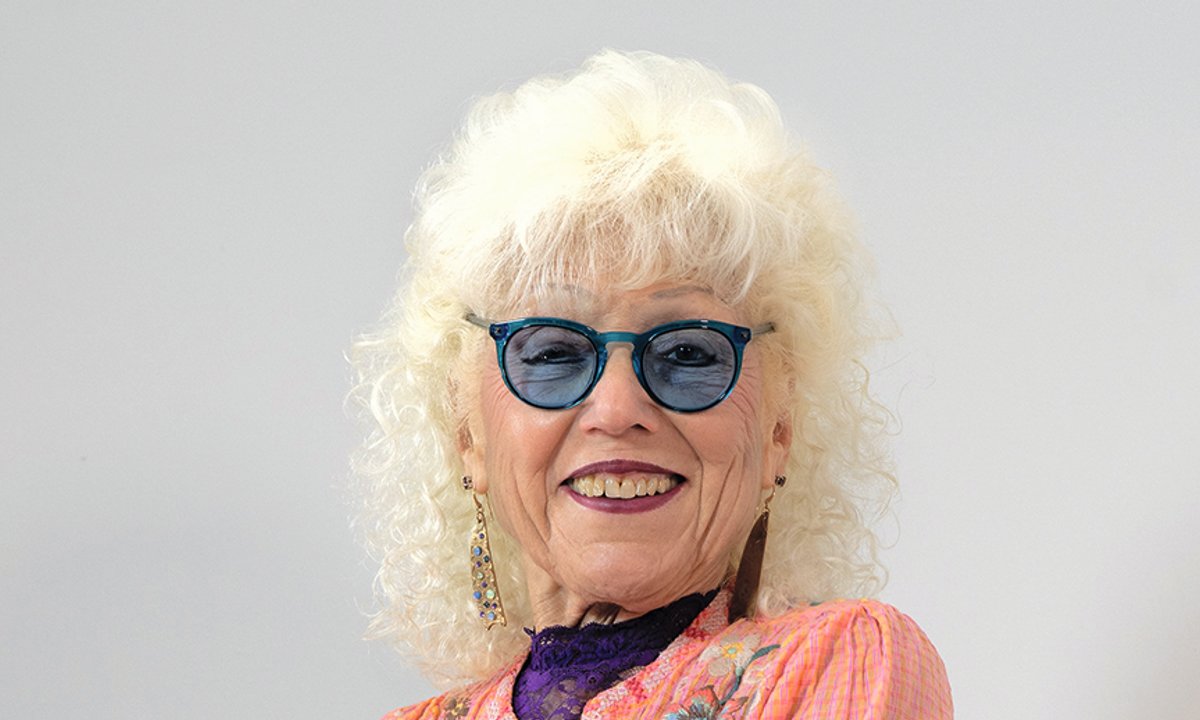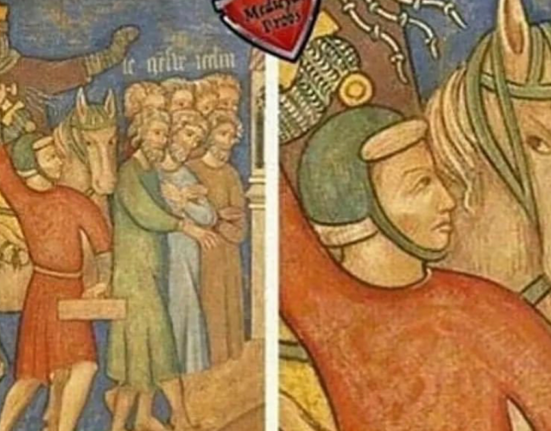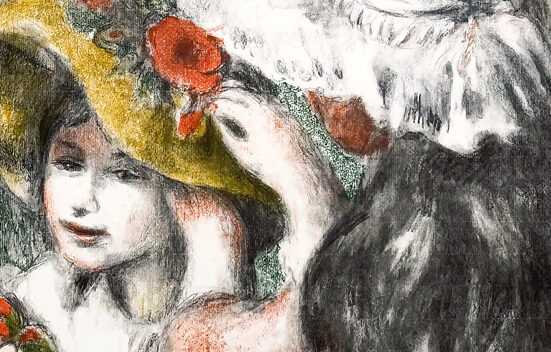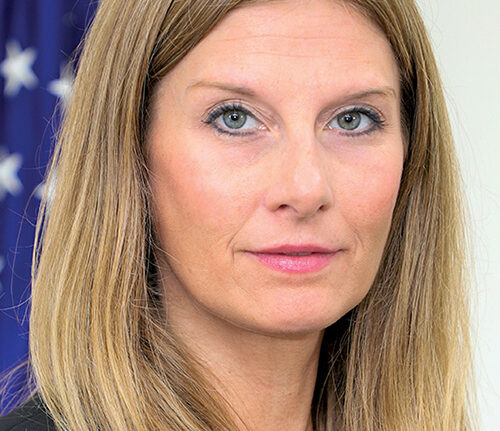Judy Chicago, the godmother of feminist art, knows all about making in the margins. When her installation The Dinner Party was first revealed to the public in 1979, its theatrical staging and meticulously researched conceit—a figurative “seat at the table” for more than 1,000 important female historical figures—drew derision from male critics and saw its initial tour cancelled. While the mainstream art world turned its nose up at Chicago’s endeavour, a dedicated audience was forming. After a bumpy start, The Dinner Party went on to enjoy an international, 16-venue tour in the early 1980s, buoyed by a wave of private donations and bedrock enthusiasm. In 2007, The Dinner Party went on permanent display at New York’s Brooklyn Museum, a monument against women’s erasure from the canon.
The function of beauty in art is to help us look at aspects of reality that would be too painful to confront if not presented beautifully
Chicago has spent her whole career waiting for gatekeepers to catch up, patiently producing groundbreaking work. Now, aged 84, she is the subject of a major retrospective at the New Museum in New York. The exhibition, Judy Chicago: Herstory, traces the artist’s 60-year career, from early experiments in Minimalism to her 1990s explorations of ecological catastrophe and beyond. The show explodes the typical boundaries of a museum survey by reimagining the feminist archive itself; the fourth floor hosts a show-within-a-show, City of Ladies, incorporating works from more than 80 artists, writers and thinkers, including Simone de Beauvoir, Artemisia Gentileschi, Zora Neale Hurston and Frida Kahlo. This is Chicago’s artistic multiverse, a feminist recapitulation of time where the margins become the main story.
The Art Newspaper: Tell us about the fourth floor of the exhibition, the City of Ladies section. Where did the idea stem from?
Judy Chicago: First of all, I have been an admirer of the [exhibition’s] curator Massimiliano Gioni for a very long time, since he did a show in Milan called The Great Mother. It was the first major exhibition on the subject of birth and motherhood in contemporary art. In the early 1980s, when I was working on the Birth Project, I couldn’t find any images in contemporary art on a subject seemingly so universal as birth. When I saw Gioni’s show, it turned out there were a lot of images [by women] dating back to the Surrealists and the Dadaists. One of the things working with Massimiliano on this show has taught me is that women’s contribution has been totally suppressed in the art world. Not just art, but certain crafts, women’s writing, women’s music. I learned about a totally alternative cultural paradigm that dates back to the 15th century: the City of Ladies concept comes from The Book of the City of Ladies by Christine de Pizan, who was the first woman in Europe to support herself by writing.
Modern feminism did not start in the 19th century or even in the 18th century with Mary Wollstonecraft’s vindication of the rights of women. It started with Christine de Pizan’s book [in] which she built a mythological city peopled by 500 important women, most of whom we had to re-research when I was doing The Dinner Party.
Massimiliano, because of the way he approaches art historically, wanted to contextualise my work in this cultural history and in this alternative female-centred paradigm. We’ve all been raised to think that the patriarchal paradigm that has been considered art history is art history. And modern institutions have been trying to figure out how to fit women, artists of colour and artists across the gender spectrum in around that paradigm without disrupting it. The City of Ladies is going to demonstrate that there is an entirely alternative paradigm. It’s what my work grows out of and is why my work has not been able to be understood or fit into the patriarchal paradigm.
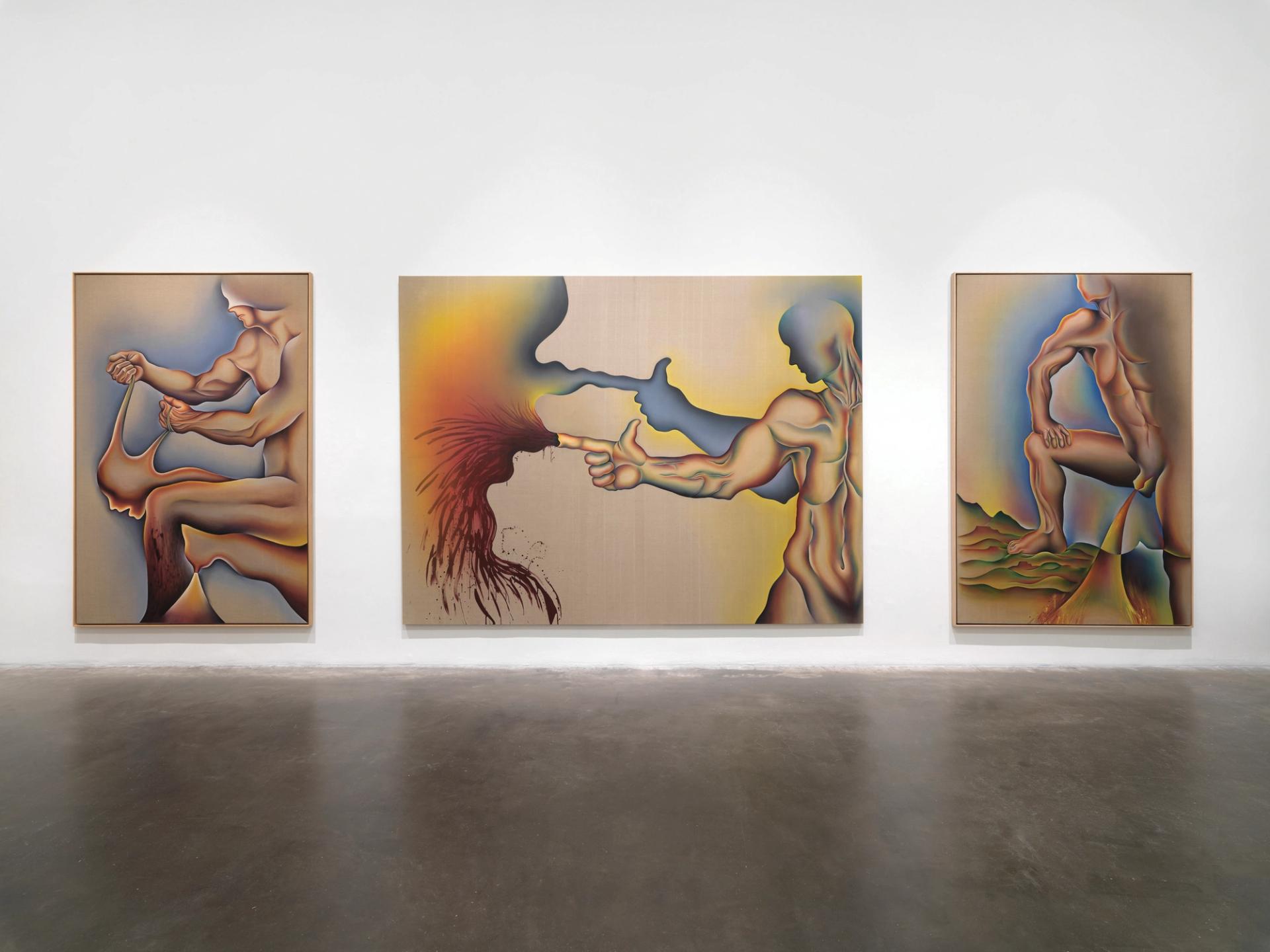
A trio of paintings by Chicago in the recently opened New Museum exhibition (left to right): Crippled by the Need to Control/Blind Individuality (1983), In the Shadow of the Handgun (1983) and Pissing on Nature (1984)
Installation view of Judy Chicago: Herstory; 2023, New Museum, New York.
Courtesy New Museum. Photo: Dario Lasagni
When it comes to the contemporary art world, do you think women artists are working within that alternative paradigm? Is that possible in the current institutional landscape?
Well, most people don’t know there’s an alternative. Don’t get me wrong, all these shows like Inside Other Spaces: Environments by Women Artists 1956-76 at the Haus Der Kunst [Munich, until 10 March 2024], or the show at the Nasher Sculpture Center, Groundswell: Women of Land Art [Dallas, until 7 January 2024], I think that’s great. But we need to come to a place where it is understood that there are other lenses through which to look at contemporary art.
I’ll give you an example: Hilma af Klint. The big temptation at the Guggenheim [exhibition in 2018] and how she was received—“awww, this nice Swedish woman is all into spirituality, isn’t this quaint?”—perfectly encapsulates the total lack of knowledge of this alternative cultural paradigm. Women and spirituality goes back centuries. And in fact, in the City of Ladies there will be a work by Hildegard von Bingen, a 12th-century mystic. If you think about it, there’s theosophy, there’s the Shakers, there’s all these women who have been at the forefront of spiritual movements in which these artists should be seen in a long tradition, our tradition.
The art world doesn’t know how or where to place too much of women’s production. I’ve brought this idea up to a number of young women in the last of couple months and, at first, this idea seems very strange to them. [But] then, when they think about it, something happens, and they go, “well yeah that makes a lot of sense”. It’s just never been presented by a major institution.
One thing that has always stood out about your work is the relationship between beauty and violence. Could you talk a little bit about that in the context of this larger project of alternative history making?
I have a very specific idea about the function of beauty in art. I believe that the function of beauty in art is to help us look at aspects of reality that would be too painful to confront if they were not presented beautifully. The first time I really thought a lot about this was when Donald [Woodman] and I were working on the Holocaust Project. How could we make images about such a terrible period in history that anybody would look at? This was also really relevant in my last major project, The End: A Meditation on Death and Extinction. It was difficult to confront my own mortality. But what was much, much more difficult was the extinction section in which I spent two years every day in my studio grappling with what we’re doing to other creatures on the planet and the scale at which we’re doing it. I had to use every ounce of skill I have to transform this absolutely grief-inducing reality into images. It’s one of the reasons I made them small and intimate, because otherwise they would be unbearable to look at.
This is one of the things that was quite interesting in the De Young retrospective [in San Francisco in 2021], where the curator, Claudia Schmuckli, placed my newer work first and my better-known work later in the show, reversing the chronology. I kept joking that people were just going to walk through all these rooms of difficult subject matter and go to my early work to breathe a sigh of relief. But no, that’s not what happened. Actually, more people were in the early galleries than the later ones. That’s how the function of beauty, as I understand it, was translated into that work.
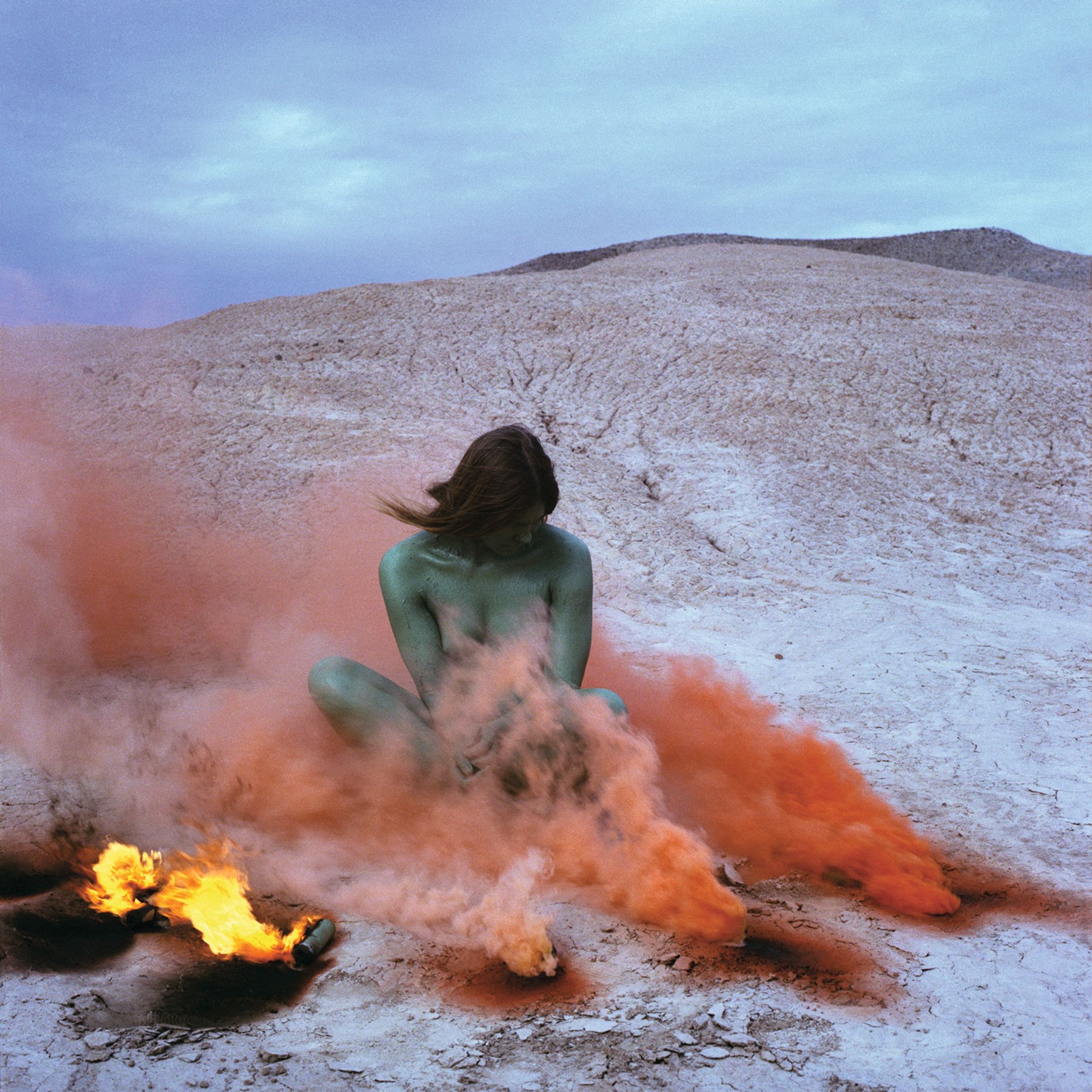
“The function of beauty in art is to help us look at aspects of reality that would be too painful to confront if not presented beautifully”:
Immolation (1972), from Chicago’s On Fire series
© the artist/ARS, New York; courtesy of the artist
When you are making work that devastating, what do you hope the viewer takes away? Are you trying to enact change, or is that too simple a way of looking at it?
My father taught me that the purpose of life was to make a contribution. And that’s what I’ve tried to do. I’ve tried to make a contribution by creating art that can educate, inspire and empower viewers. Then you can look at my career, no good deed goes unpunished.
Do you still feel like today your work is marginalised or ignored in institutional spaces?
It’s a yes and no answer. There are a lot of major institutions that my work is not in. Like the Museum of Modern Art [in New York]. Until recently, the Whitney; that just changed. I could list dozens of major institutions that do not own my work. On an institutional level, that has not changed. However, there are now several generations of curators both male and female who have a totally different point of view and who do understand my work. I think my work is in the process of being understood at an appropriate level.
[The writer and poet] Quinn Latimer wrote an essay for the Herstory catalogue in which she talked about how her mother took her to see The Dinner Party when she was a teenager, when she still had tremendous body shame and also did not yet understand the barriers her gender were going to present her with. And it’s only now, of course, with experience and perspective, that she was able to look back and realise this shame. I think it’s the first time I’ve ever read a female writer who acknowledged some of her feelings of fear and repugnance when she saw The Dinner Party. It took 45 years until a female writer could acknowledge this component that had contributed to a lot of very hostile writing by women that really hurt me at the time. I thought that was a huge generational shift.

An early work by Chicago, Virginia Woolf (1973), is part of The Reincarnation Triptych, where each painting is named after a woman who inspired the artist
© the artist/ARS, New York; courtesy of the artist
Biography
Born: 1939 Chicago
Education: 1959-64 BA and MFA University of California, Los Angeles
Lives and works: Belén, New Mexico
Key Shows: 1979 San Francisco Museum of Modern Art; 1984 ACA Galleries, New York; 1993 Spertus Institute, Chicago; 2021 De Young Museum, San Francisco
Represented by: Jessica Silverman Gallery, San Francisco
• Judy Chicago: Herstory, New Museum, New York, until 14 January 2024

